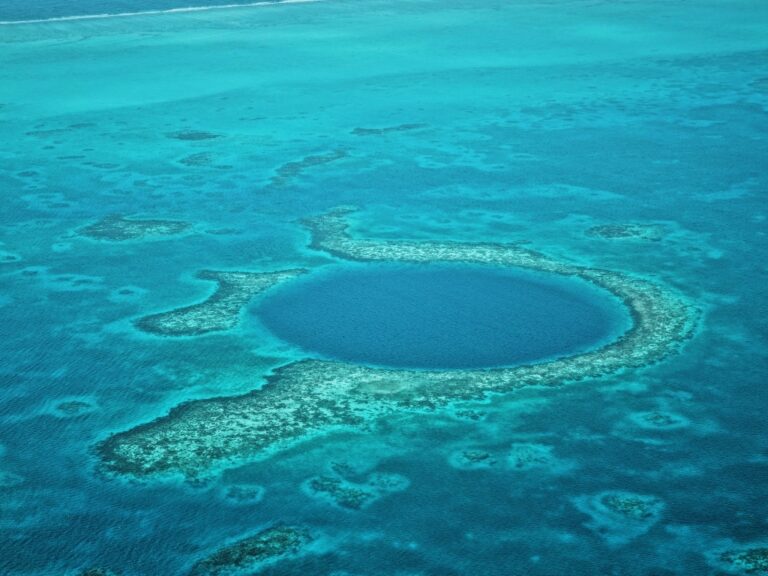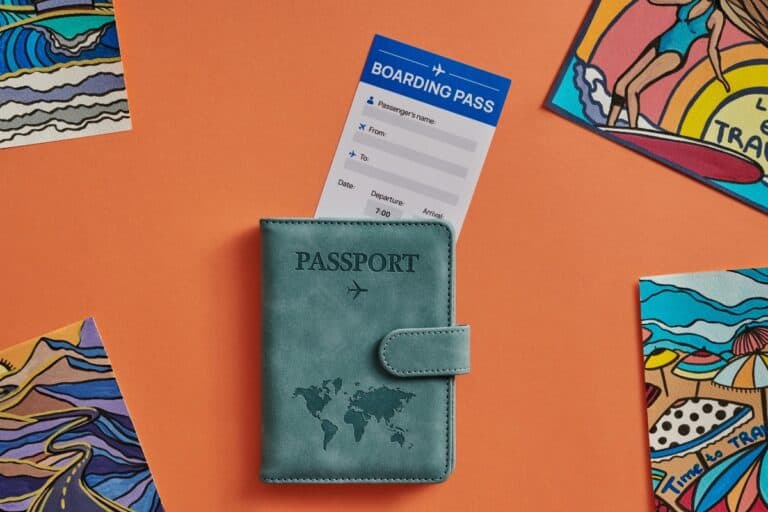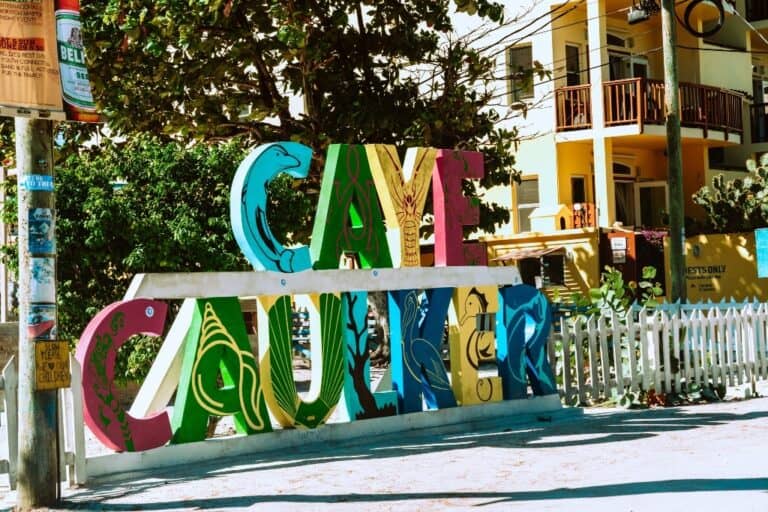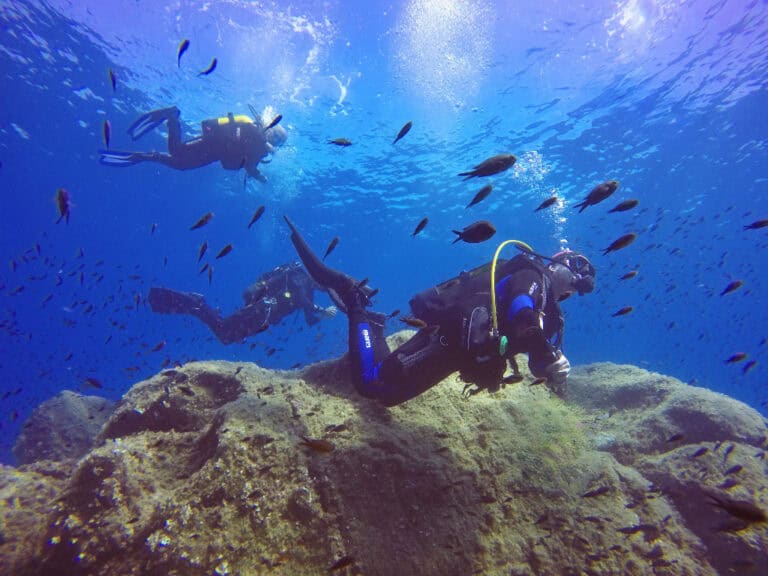How to Pack for a Dive Trip: A Complete Guide
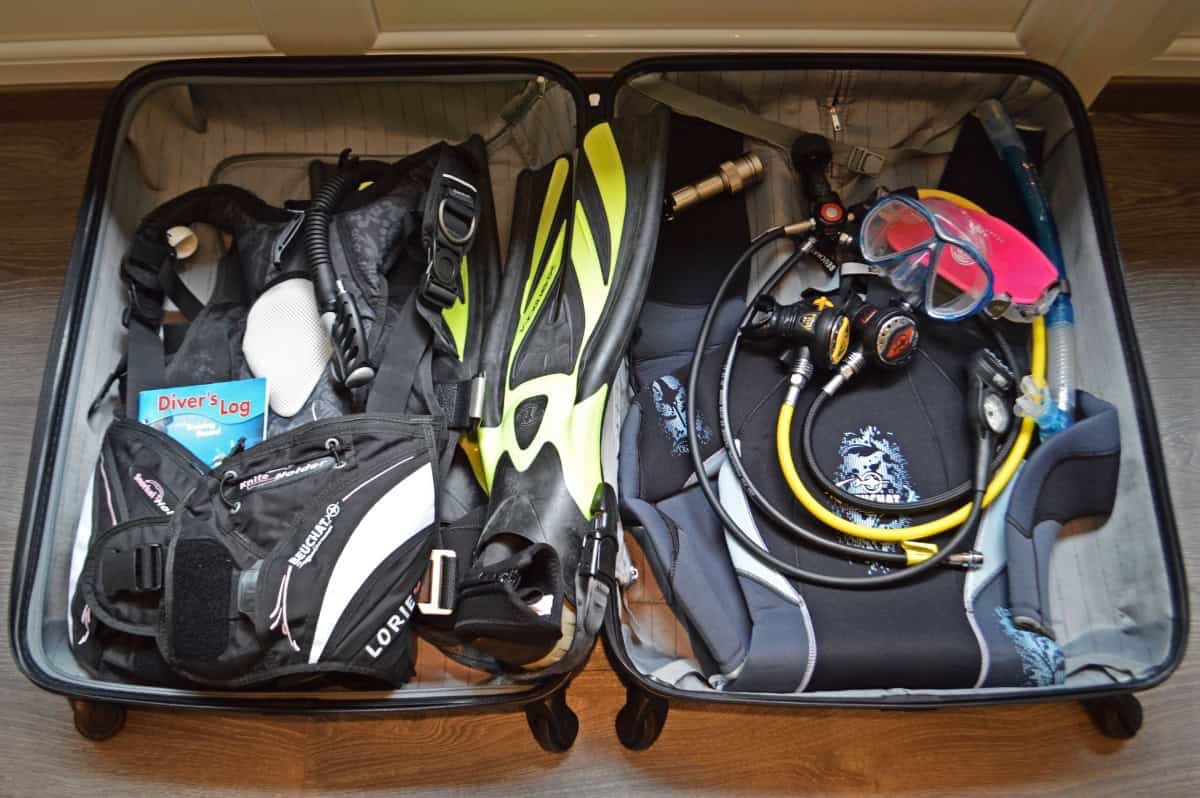

Packing for a dive trip can feel like a daunting task, especially when it involves juggling dive gear, personal belongings, and travel essentials. Trust me, I’ve been there—I’ve packed for many dive trips since 2013, flying my gear to the U.S., Europe, the Philippines, and Australia.
I’ve lugged my equipment on flights, buses, trains, and cars—sometimes even while juggling two toddlers (but that’s probably a topic for another blog post!). If there’s one thing I’ve learned, it’s that smart packing makes all the difference.
Whether you’re a first-time diver or a seasoned pro, this guide will help you pack smart and stay organized for your next dive adventure. Let’s dive in (pun intended!) to make sure you have everything you need—without overpacking.
What to Pack for a Dive Trip
Packing for a dive trip requires more thought than your average vacation. Dive gear can be bulky, and the last thing you want is to realize you forgot something essential.
One of my early mistakes was forgetting an essential accessory for my dive camera—the ball attachment for my dive lights. Without it, all my other heavy accessories were pretty much useless, as I had no way to attach the lights in the first place!
Since then, I’ve learned the value of having a reusable packing list to ensure I never forget the essentials again. Learning how to pack efficiently will make all the difference in your packing process.
Here’s a breakdown of what you should bring, how to pack it efficiently, and a few extra tips to make the process smoother.
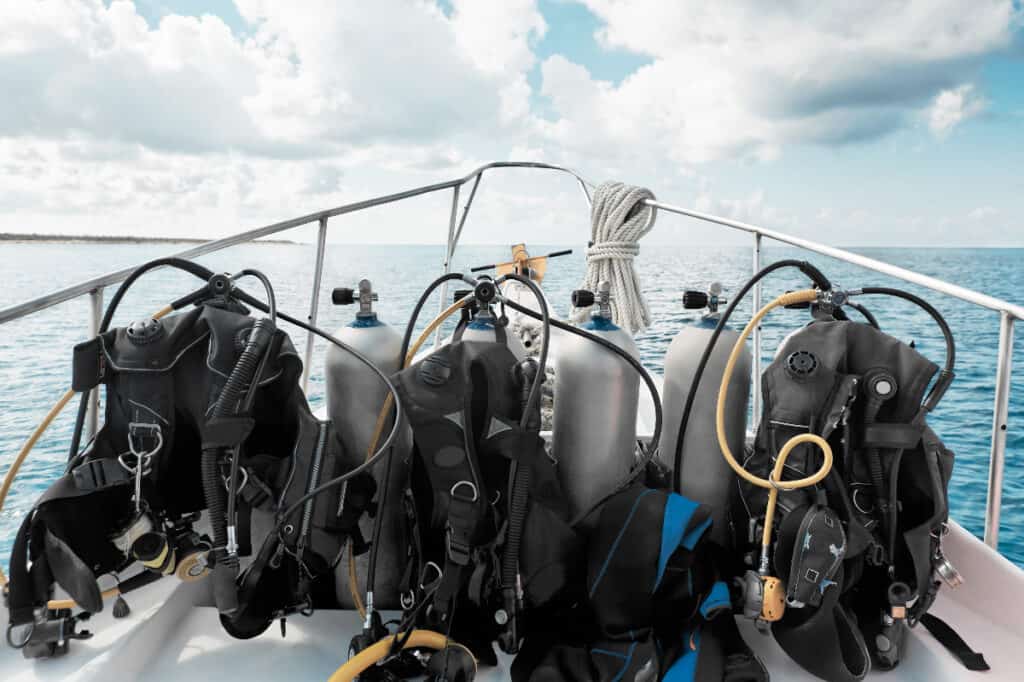
1. Essential Dive Gear to Bring
While most dive centers offer rental gear, many divers prefer using their own equipment. Personally, I always pack at least some of my gear—like my mask, snorkel, fins, and wetsuit—because they fit me well and maximize my comfort underwater.
There’s nothing worse than an ill-fitting mask leaking mid-dive or rental fins giving you blisters! Bringing gear that I know works for me ensures I can fully enjoy the dive without distractions.
Here’s a list of essential dive gear you’ll want to pack:
✅ Mask, snorkel, and fins: Pack a good quality mask that fits well. Foldable or lightweight fins are great to save space in your luggage.
✅ Wetsuit or dive skin: Depending on your destination, pack a wetsuit appropriate for the water temperature. A 3mm wetsuit works for warm waters, while a 5mm or 7mm is better for colder dives.
✅ BCD (Buoyancy Control Device): If you have your own BCD, be sure it’s lightweight and easy to pack. Some brands offer travel-friendly options.
✅ Dive computer: If you own a dive computer, pack it in your carry-on to avoid damage during transport.
✅ Regulator: Like the dive computer, regulators should be packed carefully. Place it in a padded bag or carry-on for protection.
PRO TIP: Leave the weights at home! They add unnecessary weight to your luggage, and dive centers will always provide them.
2. Packing Dive Gear Efficiently
Dive gear can take up a lot of room, so packing it efficiently is key. Over the years, I’ve learned that a little extra care goes a long way in keeping gear in top shape—like always packing my mask in a hard case.
My mask is 11 years old and still the one I use today, all thanks to this simple habit. Taking the time to pack wisely not only saves space but also protects your gear from damage during transit.
Here are a few ways to save space and protect your gear.
✅ Use a mesh dive bag: These are lightweight, breathable, and great for transporting wet gear.
✅ Pack foldable fins: These fins save a ton of space in your luggage. They’re a game-changer if you’re short on space.
✅ Protect your mask: Store your mask in a hard case to prevent scratches or damage during transit.
✅ Wrap your regulator: Use a towel or wetsuit to wrap your regulator and prevent it from getting knocked around.
PRO TIP: Consider a dive gear bag that doubles as a carry-on. This way, you can bring your most valuable dive gear (like your computer and regulator) with you on the plane, ensuring it stays safe and sound.
3. Packing Your Clothes
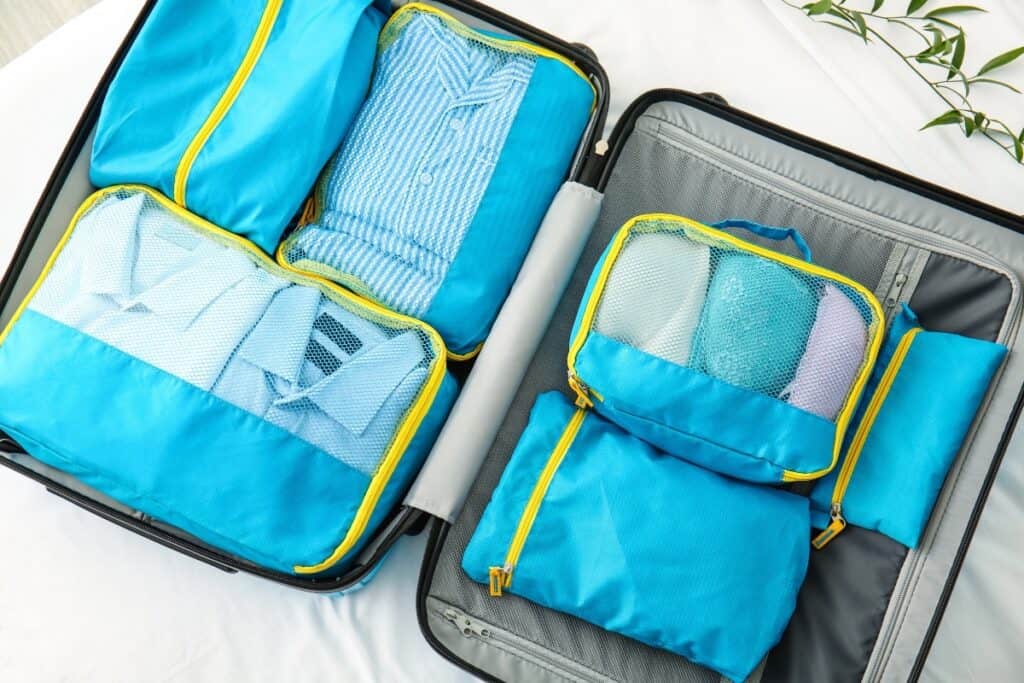
Now that the dive gear is sorted, let’s talk about clothes. Your clothing choices will depend on the climate of your destination, but if you’re like me, a dive trip isn’t just about the diving—it’s also a chance to explore the local culture, go on day tours, and enjoy chic evening dinners. Even though diving is always the highlight, I love experiencing a destination beyond the water.
To keep everything organized (and to avoid your dive bag turning into a chaotic mess), I highly recommend packing cubes, especially the compression ones. They help save space, keep clothes neatly separated, and make it so much easier to find what you need—whether it’s a fresh rash guard for the next dive or a breezy dress for dinner.
Here’s a basic checklist to make sure you’re covered for every occasion:
✅ Lightweight, quick-dry clothing: Pack shorts, t-shirts, and breathable fabrics that dry quickly—perfect for beach days and boat rides.
✅ A waterproof jacket: Even in tropical destinations, rain can happen, especially during boat trips.
✅ Swimwear: Bring at least two swimsuits. You’ll want to rotate between dives.
✅ Casual evening wear: If you plan to head out for dinner or drinks, a few casual outfits will do.
✅ Flip-flops or sandals: Easy to slip on and off between dive sessions.
PRO TIP: Roll your clothes instead of folding them. This saves space and reduces wrinkles—a win-win! And for ultimate space-saving, use compression packing cubes—they’ll keep everything compact and organized so you can pack more without the bulk.
4. Personal Items and Essentials
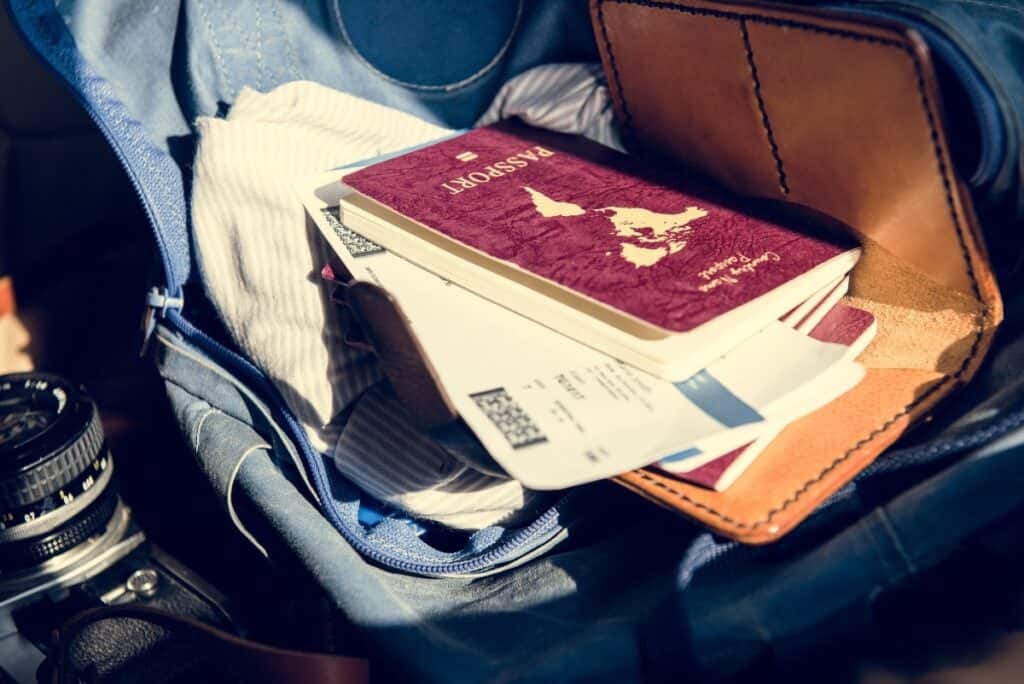
It’s easy to get caught up in packing dive gear and forget the other travel essentials. Don’t make that mistake—I’ve done it before and had to hunt down a pharmacy in a foreign country just to find a mosquito repellent and insect bite cream (lesson learned the itchy way!). Here’s what you should bring:
✅ Travel documents: Passport, visa (if required), dive certification card, and travel insurance documents.
✅ Reef-safe sunscreen: Opt for reef-safe sunscreen to protect marine life while keeping your skin safe.
✅ Toiletries: Pack travel-sized toiletries to save space.
✅ Medications: Bring any personal medications, plus some basic items like seasickness tablets, cream for insect bites, pain relievers, and anti-nausea medicine.
✅ First-aid kit: Include band-aids, antiseptic, and any other first-aid essentials you might need.
PRO TIP: Consider packing a microfiber towel. These towels dry quickly and don’t take up much room in your bag.
5. Electronics to Bring
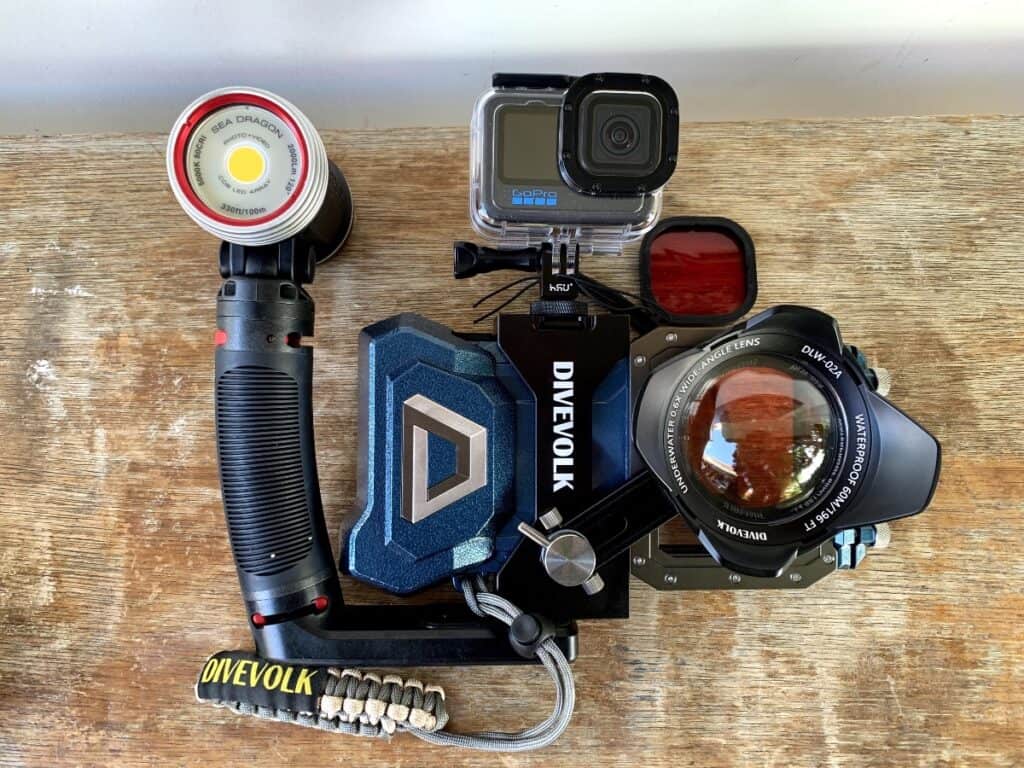
For many divers, capturing those underwater moments is part of the fun. I never go on a dive trip without my underwater camera—and sometimes, I even bring three!
Between my GoPro, phone with underwater housing, and DSLR, I like to have different options depending on the dive conditions and what I want to capture. If you love underwater photography like I do, here are the electronics you might want to pack:
✅ Underwater camera: If you have an underwater camera, be sure to pack extra batteries and memory cards—you don’t want to run out of storage mid-dive!
✅ Chargers and adapters: Don’t forget your chargers! And check the voltage at your destination—you may need an adapter.
✅ Power bank: A power bank is handy for charging your devices on the go, especially during long travel days or liveaboard trips.
PRO TIP: If you’re bringing an underwater camera, test it before your trip. There’s nothing worse than realizing your camera isn’t working when you’re already on the dive boat (trust me, I’ve been there!).
6. How to Organize Your Dive Gear
Keeping your dive gear organized will make packing and unpacking much easier. Over the years, I’ve learned that organization is key—especially when juggling multiple dives, transfers, and sometimes even kids! Here are a few must-do organization tips that I swear by:
✅ Use packing cubes: I always use packing cubes to separate my dive gear from my regular clothes. It makes finding what I need so much easier, plus it keeps things from getting tangled or lost in my bag.
✅ Label your gear: A simple waterproof marker or luggage tag can prevent mix-ups, especially when diving with a group. I’ve had my gear mistaken for someone else’s before, and trust me—it’s not fun scrambling to find your mask before a dive.
✅ Keep a gear checklist: I rely on a reusable checklist for every dive trip. It ensures I never forget an essential item, whether it’s my dive computer, camera accessories, or that all-important mask case that has kept my mask intact for over a decade.
PRO TIP: Keep a small dry bag in your dive kit. It’s perfect for storing wet gear after a dive or keeping valuables safe on boat trips.
7. What to Pack for Non-Dive Days

Even on dive trips, you’ll likely have a few days where you want to explore or relax without diving.
Personally, I love combining diving with cultural experiences—whether it’s wandering through a local town, enjoying a scenic hike, or just unwinding at a beachfront café. Here’s what I always pack for those non-dive moments:
✅ Comfortable walking shoes: A must for exploring nearby towns and nature trails. I’ve learned the hard way that flip-flops don’t cut it for long walks!
✅ A good book or e-reader: Ideal for downtime between dives or lazy beach days. There’s nothing better than relaxing with a book while watching the ocean waves.
✅ Snorkeling gear: Even on days when I’m not scuba diving, I still love being in the water. Packing my own mask and snorkel lets me explore the shallows without relying on rentals.
PRO TIP: If you’re into photography, pack a lightweight camera (aside from your underwater gear). I always bring one to capture topside adventures—whether it’s a breathtaking sunset, a local market, or a cultural landmark.
8. Travel Insurance for Dive Trips
Never forget to pack travel insurance, especially for dive trips. I’ve seen enough unexpected situations—like missed flights due to weather delays or dive gear getting lost in transit—to know that insurance is a must.
Make sure your policy covers scuba diving, medical evacuations, and any gear loss or damage so you’re protected if anything goes wrong.
PRO TIP: I always use dive-specific insurance (DAN Diving Insurance) because it provides coverage tailored for divers. Some providers even offer protection for dive equipment, cancellations due to bad weather, and any dive-related accidents, which gives me extra peace of mind before every trip.
9. Avoid Overpacking
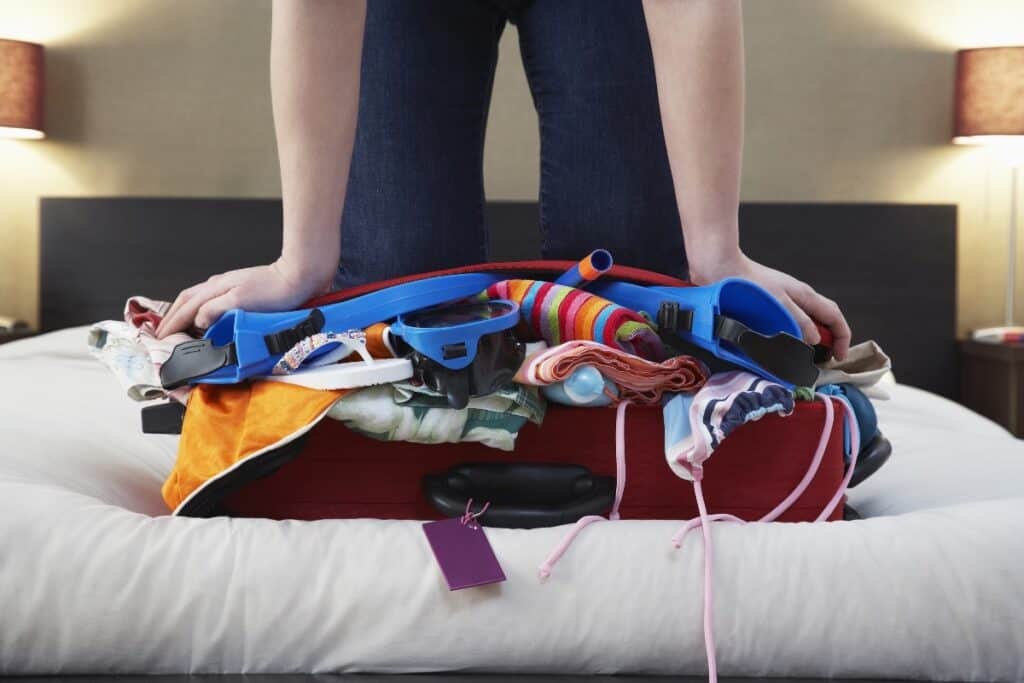
Overpacking is a common mistake, especially for first-time dive travelers. It’s tempting to pack for every possible situation, but trust me, lugging around an overstuffed suitcase (especially with dive gear) can quickly take the joy out of travel.
I’ve learned to pack smart—because dragging an oversized bag across a sandy beach or through a tiny island airport is not fun!
✅ Stick to the essentials: Do you really need five wetsuits? Probably not. Bring what you need and leave the rest at home.
✅ Check with your dive center: Before I pack, I always check with the dive center to see what gear they provide. This helps me avoid bringing unnecessary items (like those weights I once packed—never again!).
PRO TIP: Weigh your luggage before you leave for the airport. Excess baggage fees can be steep, especially if you’re traveling with dive gear.
10. Final Packing Checklist
Before you set off on your adventure, double-check that you have everything you need with this handy dive trip packing checklist:
✅ Dive gear (mask, fins, wetsuit, BCD, dive computer, regulator)
✅ Personal items (clothes, toiletries, travel documents, medications)
✅ Electronics (underwater camera, chargers, adapters)
✅ Travel insurance that covers scuba diving
✅ Snorkeling gear for non-dive days
✅ Dry bag for wet gear
✅ First-aid kit
PRO TIP: Keep a laminated copy of your packing list. You can reuse it for future trips and easily check off items as you pack. If you want a more structured way to stay organized, grab my Ultimate Adventure Travel Planner, which includes a smart packing list and a scuba-diving specific checklist—so you never leave an essential behind again!

The Wrap-Up: Ready to Pack for Your Dive Trip?
Packing for a dive trip can seem overwhelming, but with some careful planning and organization, you’ll have everything you need for a fantastic adventure. Whether you’re exploring coral reefs or deep wrecks, being prepared ensures you’ll have a stress-free, memorable experience.
If you found these tips helpful, check out more of my packing guides and travel advice in my post on 10 Ultimate Travel Planning Tips to Maximize Your Adventure. And if you want a foolproof way to stay organized on all your dive travels, my Ultimate Adventure Travel Planner has got you covered with smart packing lists and dive-specific checklists.
Happy diving and safe travels!

